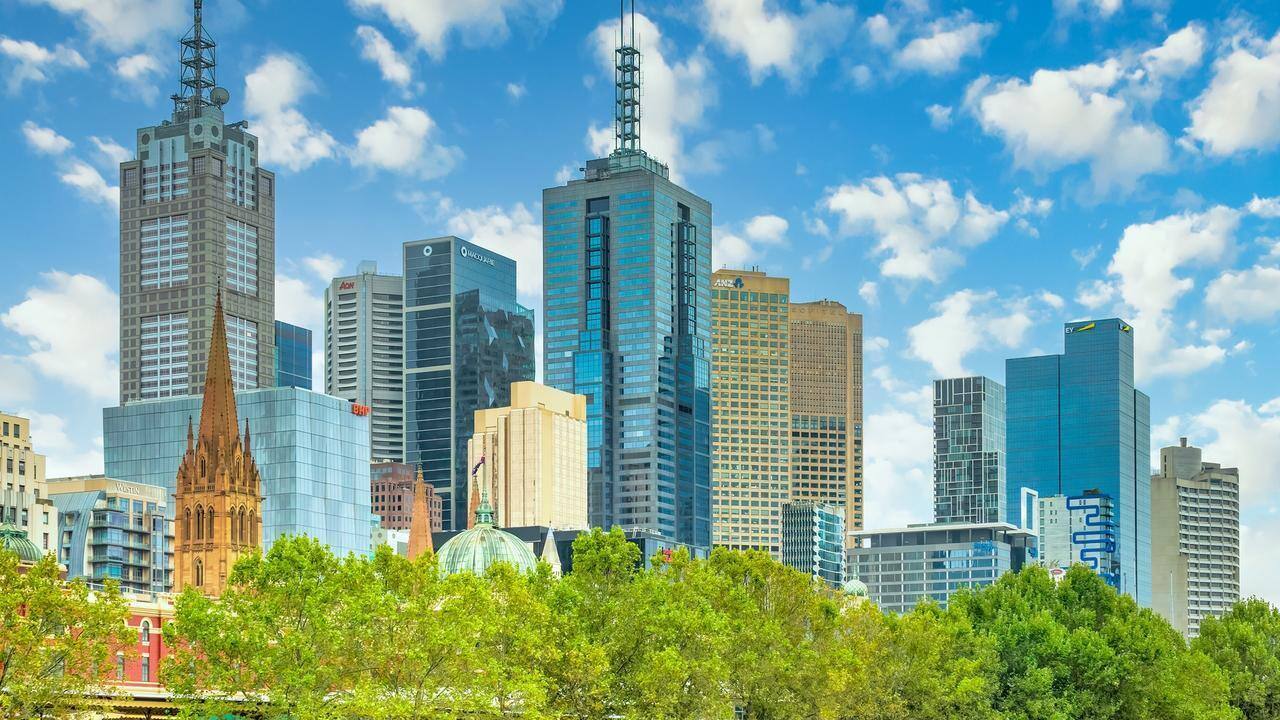Features > Property News & Insights > Housing Trends
The suburbs in Western Sydney that are poised for success

KEY POINTS
- The National Australia Bank says Sydney’s west is set for a “new gold rush” which will bring unprecedented population growth and economic activity to the region
- NAB says this “renaissance” will see strong growth in home values continue in the coming years
- Strong demand for property in Greater Western Sydney is set to continue and keep value growth strong, according to NAB, no matter how much supply comes onto the market
- Suburbs in Sydney’s west are currently experiencing higher median dwelling price growth than more expensive areas of the city
If you are over 45, you may remember a catchy 1986 song by folk-rock duo Timbuk 3 called “The Future’s So Bright, I Gotta Wear Shades.”
Well, if you believe the National Australia Bank (NAB), the same could be said about the future for Sydney’s west.
The “Big 4” bank has published a new report entitled “Australia’s Engine Room - Greater Western Sydney: A story of entrepreneurship & ambition.”
The report says that Sydney’s west “is entering a transformational phase of community and
economic life” and is now “experiencing a boom in population, cultural vibrancy and economic activity.”
The report also makes clear the region is set for a sustained residential property boom.
The details
There are often different definitions of what makes up “Western Sydney,” “Sydney’s West,” or “Greater Western Sydney,” but the NAB report uses the WSROC geographical boundaries.
The Western Sydney Regional Organisation of Councils (WSROC) represents five local councils; Blacktown, Blue Mountains, Hawkesbury, Liverpool and Cumberland City Councils.
Julie Rynski, NAB’s Executive for Metro and Specialised Business and Private Banking, says it’s an “exciting time to live and work in Greater Western Sydney” and says “indications – in our data and in our conversations with customers – point to a renaissance for the west; a time of
opportunity for all those home-grown businesses looking to connect with the world.”
Key to the region’s future will be the new Western Sydney airport, slated for a late 2026 opening.
NAB says this “will be a game-changing piece of infrastructure for those living and working in GWS.”
“An easy-access bridge to global markets for local industries and businesses, it should lock the region’s manufacturing and logistics sectors into a new phase of growth, creating 35,000 jobs once open and pushing $24 billion into the region annually.”
“Operating freight and passenger services 24 hours per day, the airport will bring in 10 million
visitors annually by 2033 – many of them, no doubt, to work, enjoy and invest in the region.”
The NAB report predicts this will create “a new gold rush.”
However, it points out that the airport and other big infrastructure projects are building on a strong base, as one in 11 Australians already call Greater Western Sydney home, and it already produces one-third of the Sydney region’s gross economic output.
Residential property
The NAB report says Greater Western Sydney already houses half of the people that live in Sydney (2.7 million), and projections are that it will absorb no less than two-thirds of the city’s population growth in the next 20 years.
This means “asset valuations are likely to prove strong in coming years, no matter how much supply comes onto the market.”
It says that “despite headwinds in national markets”, land and property valuations have held up well across western Sydney.
“Certain markets remained more heated than others – the Parramatta residential market looks set for continued strength for years to come.
“And new developments like Western Sydney Lakes shone.
“Transaction volumes remain elevated too, with Campbelltown and the Macarthur region standing out, but property continues to be highly sought after across GWS,” the report says.
To illustrate this, NAB singles out the top five western Sydney suburbs for house price growth, with Auburn leading the way with 16.1%, followed by Blacktown with 15.3%, St Marys with 15%, Mount Druitt with 13.7%, and the Merrylands/Guildford area with 13.6%.
Meanwhile, Sydney as a whole experienced median house price growth of 6.8% over the last year (below the national median of 8.4%).
This backs up data compiled by Freedom Property Investors which shows suburbs away from Sydney’s expensive northern and eastern suburbs and the inner west have seen much faster value growth over the past 12 months.
These areas—overwhelmingly in Sydney’s west, where property has traditionally been cheaper—are in the lower quartile of citywide values and have seen median growth of 10.1% for houses and 5.93% for units.
Compare this with the top quartile of Sydney property values, which has seen much more restrained median growth of 4.3% for houses and 4.2% for units.
Sustained demand and strong value growth looks set to see the price gap between Greater Western Sydney residential property and the rest of the city continue to shrink.
“The GWS property market is a rapidly evolving space, and it’s thrilling to watch the transformation of the region happening before our eyes,” says NAB’s “Australia’s Engine Room” report.
“For businesses and investors, as well as homeowners, there are plenty of exciting new developments on the horizon.”
The future for Western Sydney really is so bright you might have to wear shades…
Stay Up to Date
with the Latest Australian Property News, Insights & Education.




.png?width=292&height=292&name=Copy%20Link%20(1).png)
 SIGN UP FOR FREE NEWSLETTER
SIGN UP FOR FREE NEWSLETTER








.jpg?width=1920&height=1080&name=Warning%2c%20You%20Might%20Be%20Facing%20Higher%20Taxes%20Soon%20(1).jpg)





.png?width=1920&height=1080&name=Rate%20Drops%20Signal%20BIGGEST%20Property%20Boom%20in%20DECADES%20(1).png)

.jpg?width=1920&height=1080&name=Labor%20vs%20Liberal%20These%20Housing%20Policies%20Could%20Change%20the%20Property%20Market%20Forever%20(1).jpg)
.jpg?width=1920&height=1080&name=QLD%20Slashes%20Stamp%20Duty%20Big%20News%20for%20Investors%20%26%20Home%20Buyers%20(1).jpg)
.jpg?width=1920&height=1080&name=Trump%20Just%20Slapped%20Tariffs%20%E2%80%93%20Here%E2%80%99s%20What%20It%20Means%20for%20Australia%20(1).jpg)
.jpg?width=1920&height=1080&name=Federal%20Budget%202025%20More%20Debt%2c%20No%20Housing%20%E2%80%93%20Here%E2%80%99s%20What%20You%20Need%20to%20Know%20(1).jpg)
.jpg?width=1920&height=1080&name=Australias%20Housing%20Crisis%20is%20about%20to%20get%20MUCH%20Worse%20(New%20Data%20Warns).jpg)
%20(1).jpg?width=1920&height=1080&name=Australias%20RENTAL%20CRISIS%20Hits%20ROCK%20BOTTOM!%20(2025%20Update)%20(1).jpg)
%20(1).png?width=1920&height=1080&name=Is%20Adelaide%20Still%20a%20Good%20Property%20Investment%20(2025%20UPDATE)%20(1).png)
.jpg?width=1920&height=1080&name=RBA%20Shocks%20with%20Rate%20Cuts!%20What%E2%80%99s%20Next%20for%20Property%20Investors%20(1).jpg)
%20(1).jpg?width=1920&height=1080&name=I%20Predict%20The%20Feb%20Rate%20Cut%20(My%20Price%20Growth%20Prediction)%20(1).jpg)
.png?width=1920&height=1080&name=Why%20Property%20Prices%20Will%20Rise%20in%202025%20Market%20Predictions%20(1).png)
.jpg?width=1920&height=1080&name=Why%20Investors%20Are%20Choosing%20Apartments%20Over%20Houses%202%20(1).jpg)
.jpg?width=1920&height=1080&name=Why%20Rate%20Cuts%20Will%20Trigger%20A%20Property%20Boom%20(1).jpg)
.jpg?width=1920&height=1080&name=Retire%20On%202Million%20With%20One%20Property%20(Using%20SMSF).jpg)
.jpg?width=1920&height=1080&name=4%20Reasons%20Why%20You%20Should%20Invest%20in%20Melbourne%20Now%20(1).jpg)
%20(1).jpg?width=1920&height=1080&name=Old%20Property%20vs%20New%20Property%20(Facts%20and%20Figures%20Revealed)%20(1).jpg)
%20(1).jpg?width=1920&height=1080&name=Will%20The%20New%20QLD%20Govt%20Create%20a%20Property%20Boom%20or%20Bust%20(My%20Prediction)%20(1).jpg)
%20Scott%20Kuru%20(1).jpg?width=1920&height=1080&name=Inflation%20Hits%20Three-Year%20Low%20(Will%20RBA%20Cut%20Rates%20Soon)%20Scott%20Kuru%20(1).jpg)
.jpg?width=1920&height=1080&name=How%20to%20Buy%20Investment%20Property%20Through%20SMSF_%20The%20Ultimate%20Guide%20(1).jpg)
.jpg?width=1920&height=1080&name=Victoria%20Slashes%20Stamp%20Duty%20Melbourne%20Set%20to%20Boom%20Scott%20Kuru%20(1).jpg)
.png?width=1571&height=861&name=Are%20Foreign%20Buyers%20Really%20Driving%20Up%20Australian%20Property%20Prices%20(1).png)
.jpg?width=1920&height=1080&name=The%20Single%20Factor%20That%20Predicts%20Property%20Growth%20Regions%20(1).jpg)
%20Scott%20Kuru%20(1).jpg?width=1920&height=1080&name=My%20Prediction%20On%20Rates%20%26%20Negative%20Gearing%20(Market%20Crash)%20Scott%20Kuru%20(1).jpg)

-1.png?width=1920&height=1080&name=Major%20Banks%20Cut%20Rates%20Will%20RBA%20Follow%20Suit%20(Sept%20Rate%20Update)-1.png)
%20Scott%20Kuru-1.png?width=1920&height=1080&name=Rate%20Cut%20Coming%20What%20New%20Zealands%20Move%20Means%20for%20Australia%20(Sept%20Prediction)%20Scott%20Kuru-1.png)
%20(1).jpg?width=1920&height=1080&name=Buy%20when%20the%20interest%20rates%20are%20high!%20(Why%20you%20must%20buy%20now!)%20(1).jpg)
.jpg?width=1920&height=1080&name=Carms_Revised%20Taxes%20Due%20Aug%209%20YT%20Thumbnail02%20(1).jpg)
.jpg?width=1920&height=1080&name=Carms_Too%20Little%20Too%20Late%20Aug%207%20YT%20Thumbnail01%20(1).jpg)









.jpg?width=1920&height=1080&name=Carms_Rate%20Drop%20In%20July%20Jun%2010%20YT%20Thumbnail02%20(1).jpg)
.jpg?width=1920&height=1080&name=Carms_Own%20a%20Property%20V6%20Jun%205_YT%20Thumbnail%20(1).jpg)









.png?width=1920&height=1080&name=Artboard%201%20(3).png)






.jpg?width=1920&height=1080&name=YT%20thumbnail%20%20(1).jpg)

